Some call the ceiling the ‘Forgotten 3rd Surface.’” – Paul Emmons
What is a Ceiling?
A tent’s canvas is both roof and ceiling. Except in minimalist buildings, roof and ceiling are rarely the same surface (even modern tents separate the fly—its roof—from the inner shell and screen—its ceiling). In basic construction, rafters support the roof above while they are clad below to create a ceiling. In this construction the ceiling tracks the roof line; more commonly, ceilings lay flat, covering a room.
A ceiling, then, is the overhead surface of a room or compartment. Ceilings are not structural elements in a building. They serve as finished surfaces concealing the underside of the framing structure above.
Ceiling Design
Ceilings are classified according to their appearance or construction, of which there are many kinds. Painted drywall remains the most common construction type for residential ceilings in North America. This style is also found in office construction. Modern commercial buildings rely on mineral fiber tiles to create ceilings that are suspended from the structure using T-Bar metal grids. Plaster stucco, a historic ceiling material, remains widely used, now with options for acoustic additives. Warehouses and industrial buildings often use encapsulated insulation as the ceiling.
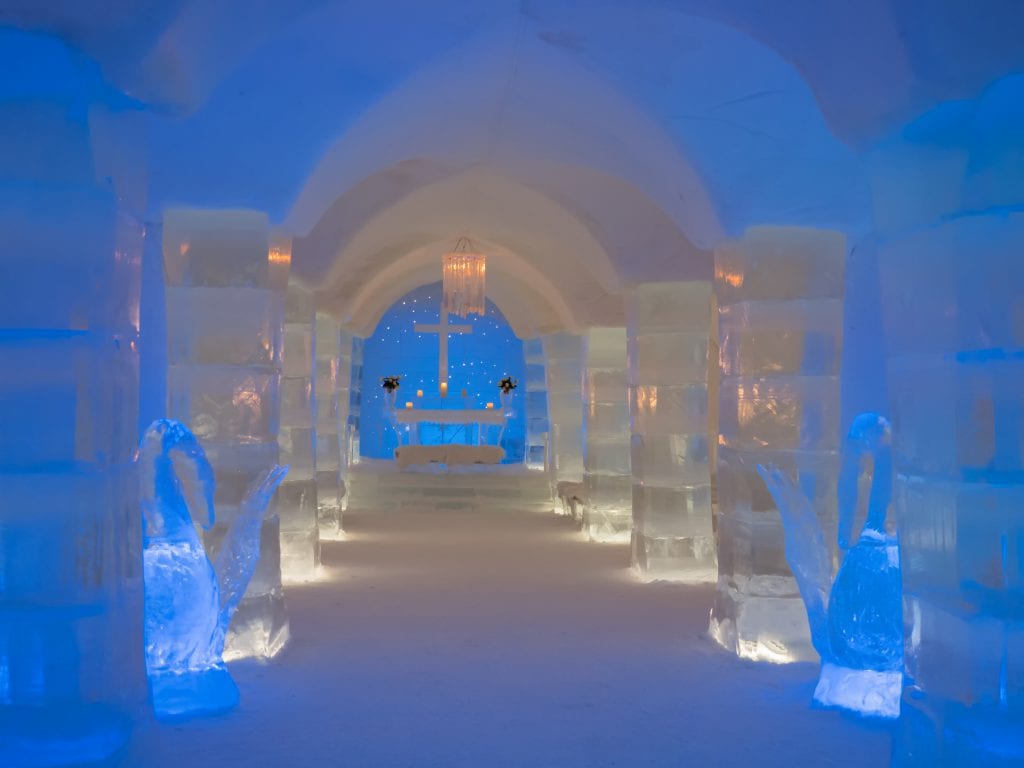
Growing in popularity is the open plenum where the underside rafters or beams are left exposed. Some would argue this configuration is not a ceiling at all. Or take the phrase ‘hitting a glass ceiling.’ If the glass is a roof, is it also a ceiling (e.g., Galleria Vittorio Emanuele)? Are the ice cubes of an Inuit’s igloo a ceiling (e.g, Sorrisniva Igloo Hotel Alta)? Our definition would suggest otherwise: they are an overhead surface, but unlike a roof, a true ceiling provides no structural functions.
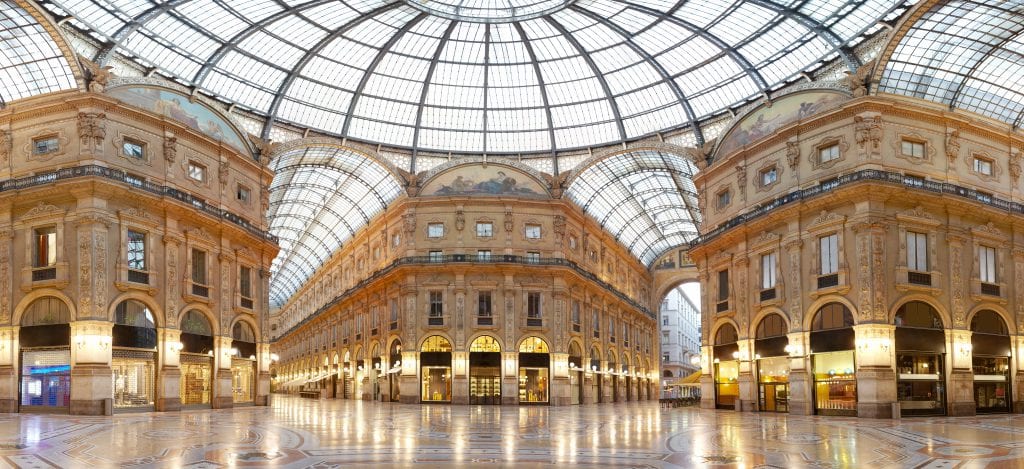
Ceilings can be decorated to taste, and there are as many examples as there are architectural styles. Plaster ceilings carved with intricate arabesque remains the classic ceiling of North Africa (e.g., the Alhambra).
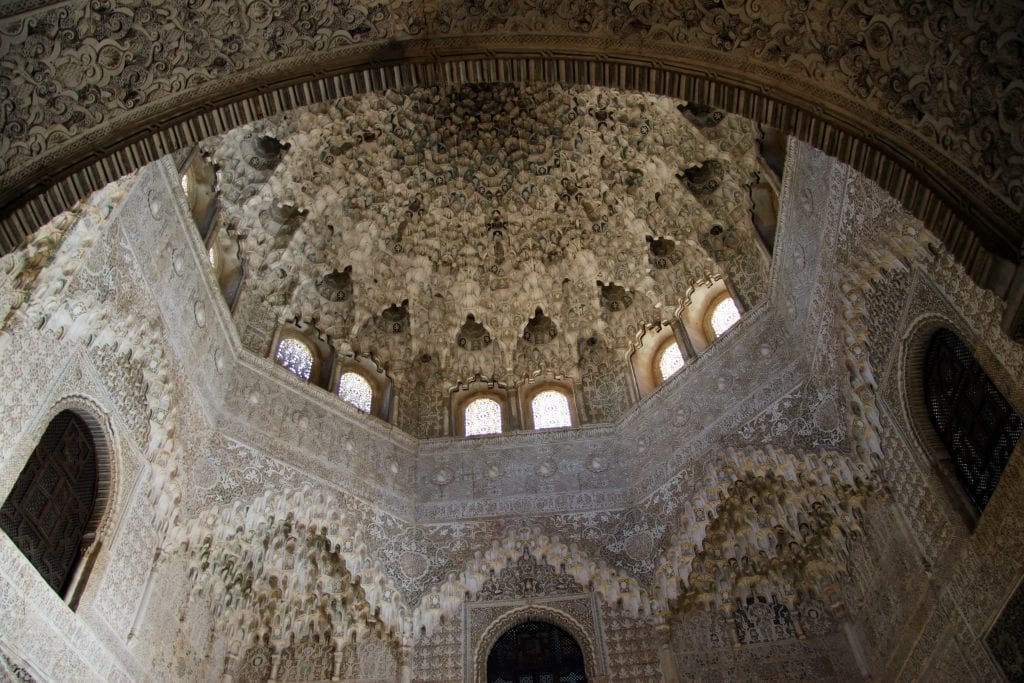
Frescoes and artwork on ceilings, especially in churches and theaters, are seen in some of the most famous ceilings in the world (e.g., the Sistine Chapel).
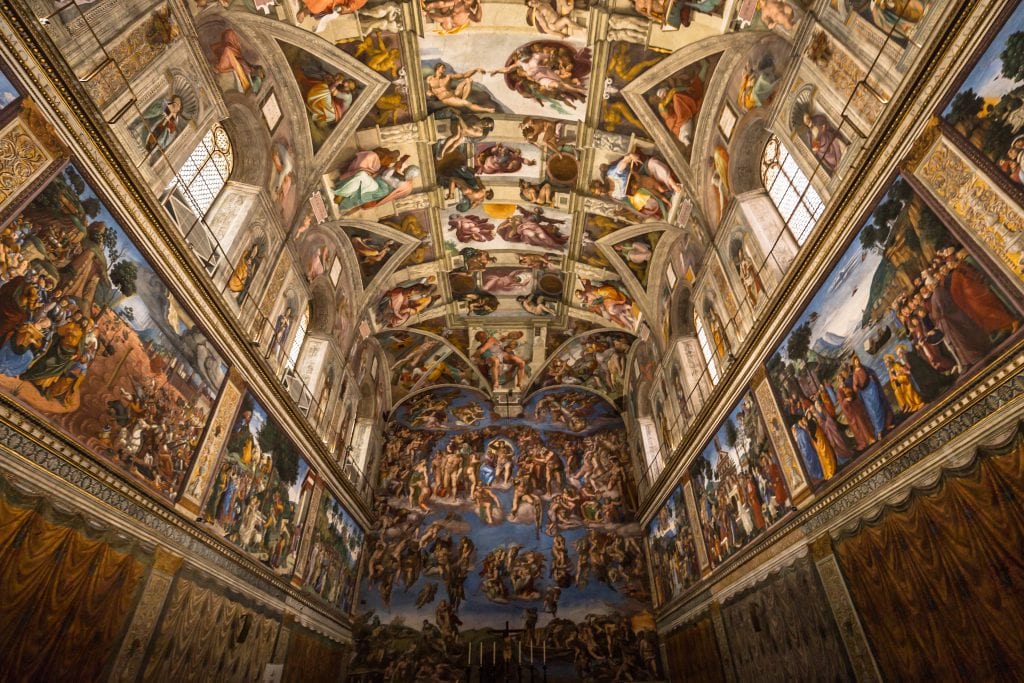
Modernist ceilings are made of plaster, drywall, metal, even concrete (e.g. Bauhaus).
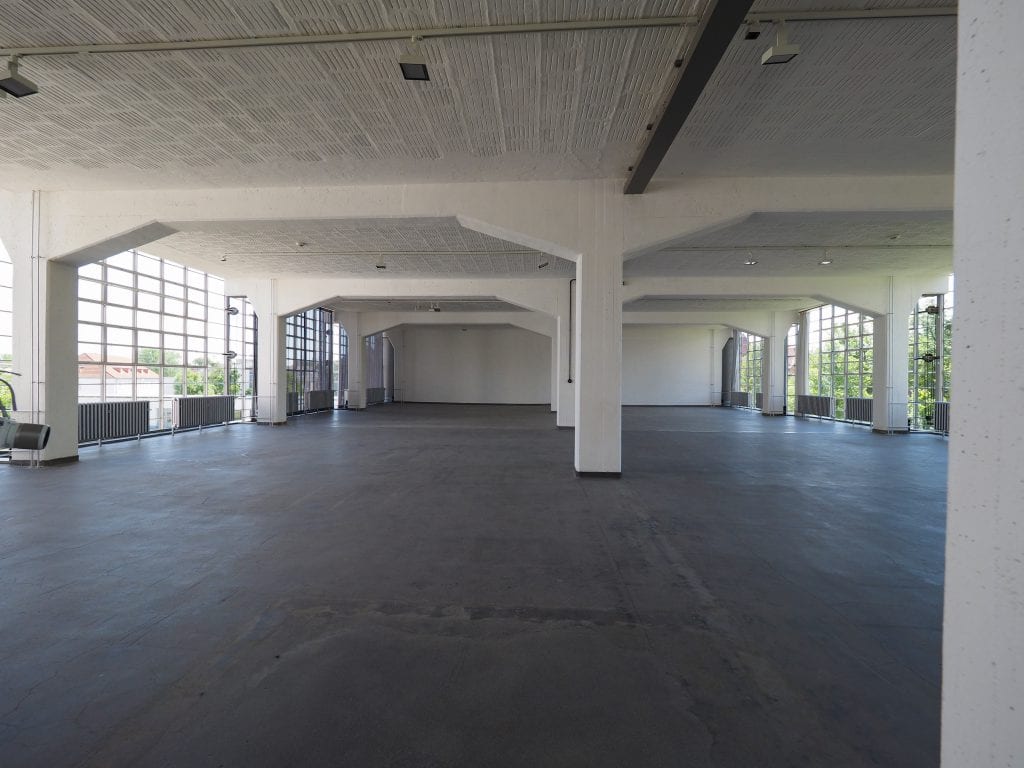
A variety of shapes and materials are used in ceilings (e.g. Viipuri Library).
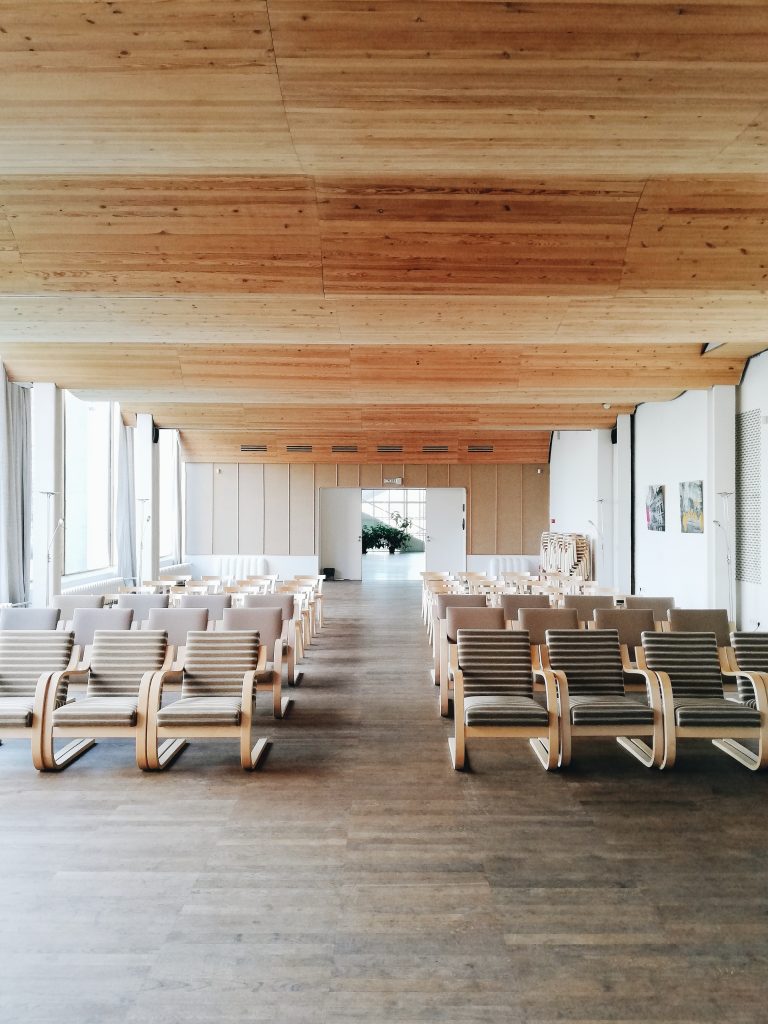
Philosophical Ponderings
There is debate if the ceiling is the ‘6th Surface’ or the ‘5th Wall’. M.C. Escher also asked, “Are we really sure that a floor can’t also be a ceiling?” Some call the ceiling the ‘Forgotten 3rd Surface.’ Paul Emmons asserts in Ceilings and Dreams: The Architecture of Levity that ceilings have become the blind spot of modern architecture. Rather than “just one building element among many,” he contends “the ceiling is a key to unlock the architectural imagination.”

And not just the architectural imagination. Research by Joan Meyers-Levy, a professor of marketing at the University of Minnesota, suggests that the way people think and act is affected by ceiling height (Science Daily, 27 April 2007). Spaces with taller ceilings seem to elicit broader, more creative thoughts.
These creative thoughts can be directed up to the surface—the ceiling—that helped sponsor them, a contemplation this brief article has hopefully encouraged. “Look up, speak nicely, and don’t twiddle your fingers,” said the Red Queen (Through the Looking Glass, Lewis Caroll).
